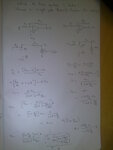srimatresri
Junior Member level 2
an opamp is configured in 2 ways, non inverting and inverting. which configuration is fast assuming single pole transfer function for opamp
Follow along with the video below to see how to install our site as a web app on your home screen.
Note: This feature may not be available in some browsers.
an opamp is configured in 2 ways, non inverting and inverting. which configuration is fast assuming single pole transfer function for opamp

The speed of opamp (if you mean bandwidth and slew rate by this) doesn not depend on feedback configuration unless feedback network includes some reactive components (capacitor, inductor). Only on the parameters of the opamp itself.
The speed of opamp (if you mean bandwidth and slew rate by this) doesn not depend on feedback configuration unless feedback network includes some reactive components (capacitor, inductor). Only on the parameters of the opamp itself.
the problem is now simpler,
we have two frequency responses one with higher gain , both having same pole location. now can u tell which is faster
i took the closed loop response of both configurations as (1/(s+1)) and (2/(s+1))
i found the output response for step input.
in that the output raises fast in non inverting configuration as it has higher gain(a multiplication factor of 2). so non inverting configuration is faster